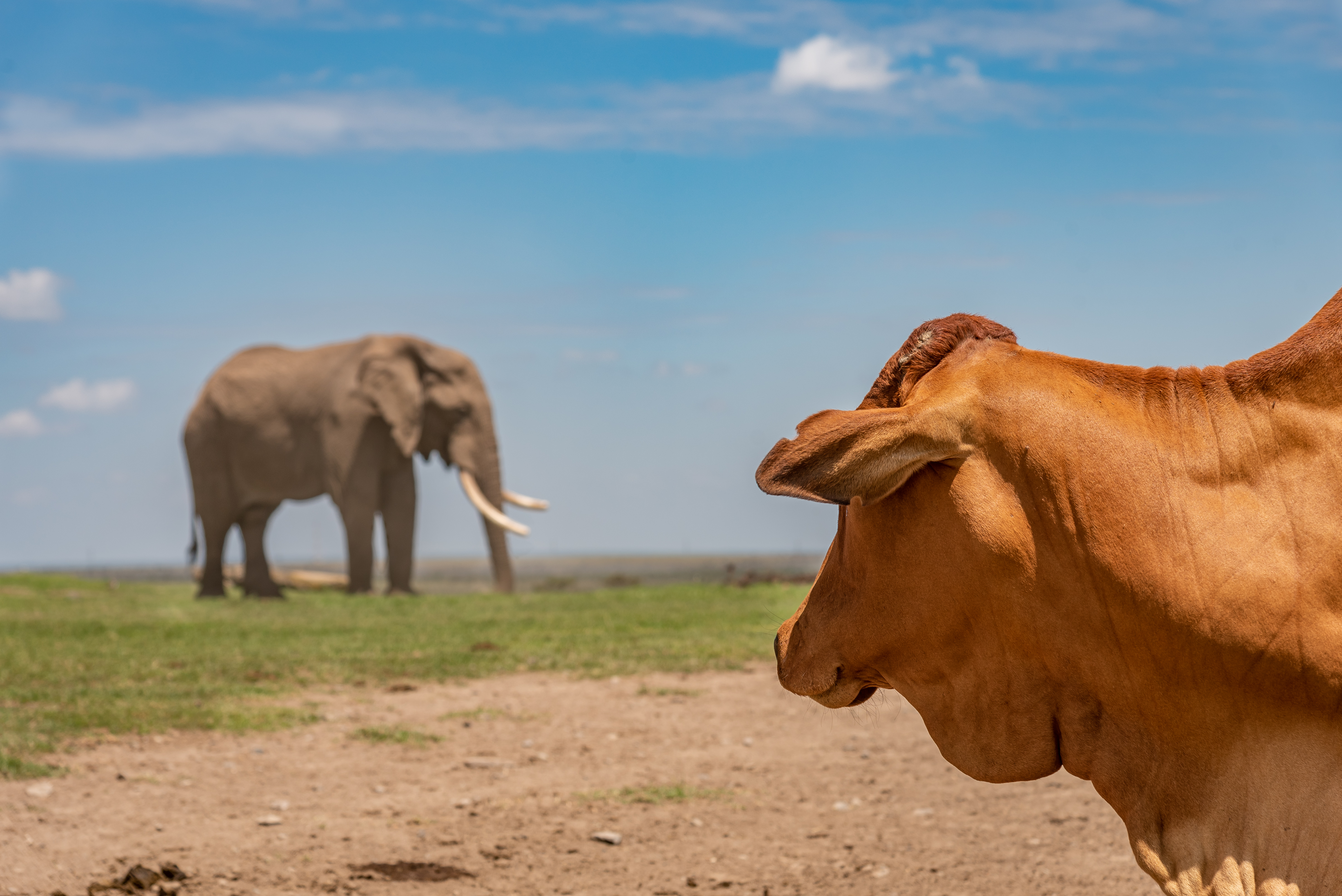

The innovative integrated land management approach was pioneered by Ol Pejeta and other conservancies in Laikipia County, Kenya. It is a nature-based solution that enables a healthy habitat for wildlife and generates income that can be reinvested in conservation and community development. The approach has been implemented since 2004, along with a community development programme that includes agriculture extension services.
Cattle are integrated with wildlife across the conservancy in carefully managed grazing patterns that replicate the ancient movement of vast herds of ungulates that used to roam the land. As cattle are moved across the rangeland, grasses are kept short and healthy, encouraging those species and new growth that sustains wild herbivores. Cattle are kept in mobile bomas overnight to protect them from predation. This concentration also creates ecological hotspots where manure fertilizes new grass growth. The bomas are relocated every 1–14 days, depending on the weather.
The grass-fed cattle are of high quality and demand premium prices. They are sold under our Conservation Beef brand, generating income for Ol Pejeta. This approach means the land is productive as well as provides healthy habitat that supports a wide range of wildlife species. It also enables benefit-sharing of conservation for communities.
- Strong management – ensuring cattle numbers achieve the right balance of rangeland management, productivity, and healthy habitat for wildlife.
- Community engagement – building strong trusted relationships with the community to support the approach.
- Adaptive management – continuous monitoring of the habitat, wildlife interactions, and cattle densities, to inform adaptation strategies as necessary.
- Robust monitoring – ensuring grazing patterns and intensity are carefully managed so that habitat is maintained, and wildlife interactions are managed.
- Boma rotation – understanding when to move the mobile cattle bomas as this is dependent on the weather. For example, in dry periods the bomas can remain in situ for 14 days compared to 1-3 days in wet weather.
- Market linkages – importance of building strong networks along the supply chain, ensuring products reach market and price volatility is managed.
- Community engagement – importance of strong relationships with the community to engage in the initiative as well as general support for the approach.